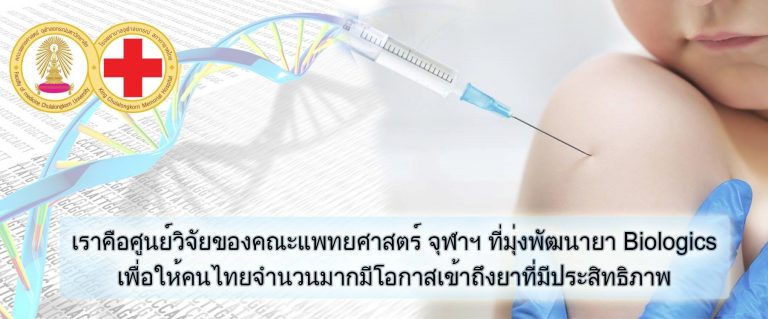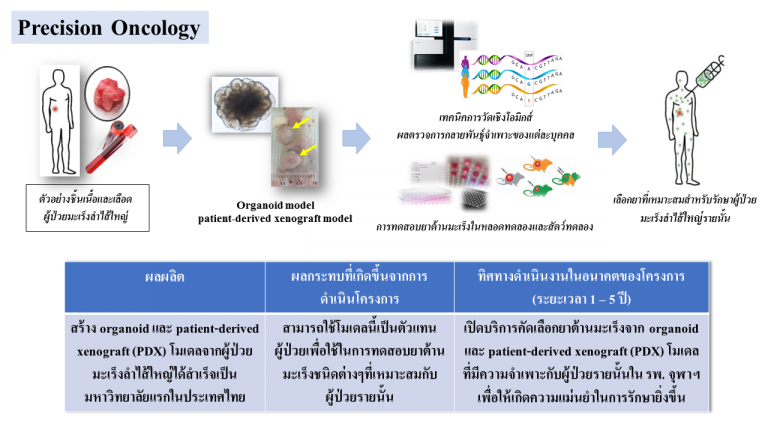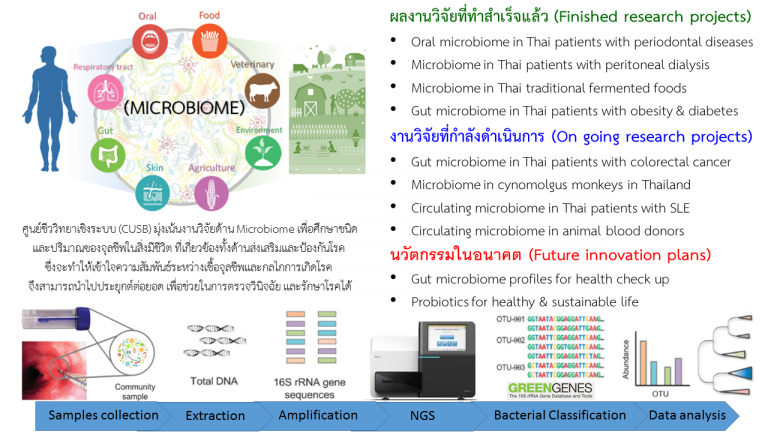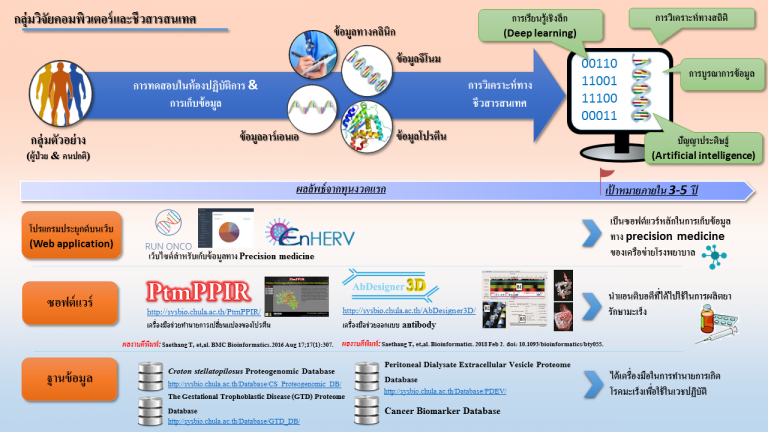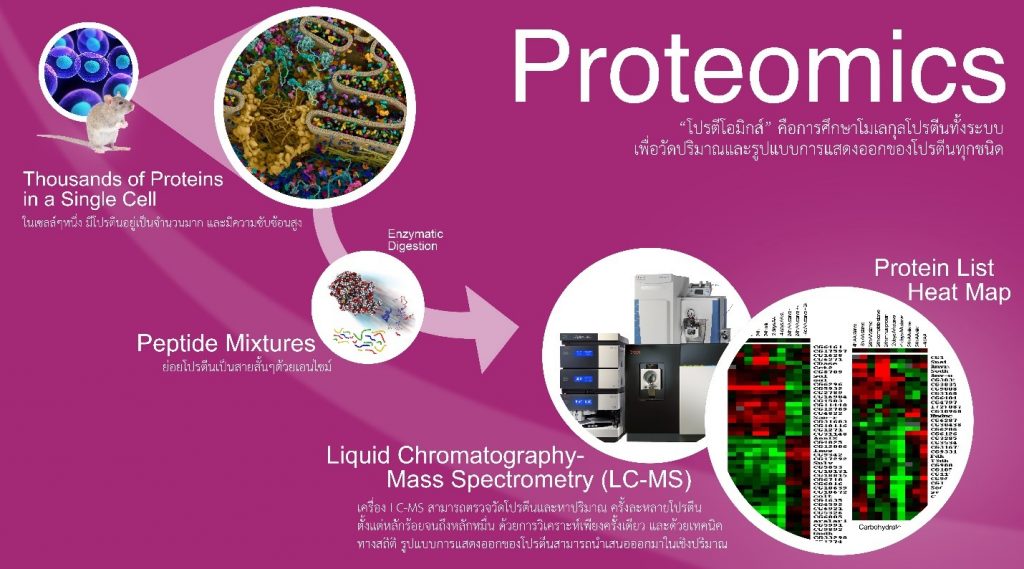Research Program/Cancer, Non-Communicable Diseases
Center of Excellence in Systems Biology
The Center of Excellence in Systems Biology (CESB), led by Dr. Trairak Pisitkun, is an innovative biomedical research center that applies the principle of “systems biology” approaches to investigate complex interactions within biological systems of health and disease. Our ultimate mission is in the development of novel diagnostic and therapeutic methods that are more efficient and safer than the current standards through a deep understanding of a given system at the intricate molecular level.
Focus Areas
Personalized Neoantigen Vaccine for Solid Cancer Treatment
Partnerships
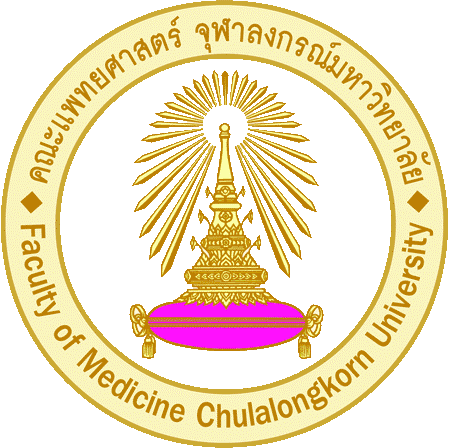

Memorial Hospital

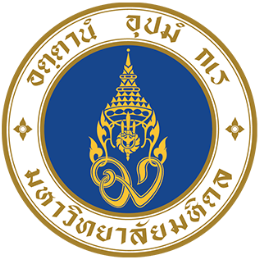

of Health

& Molecular Biology

School of Medicine






of Technology Ladkrabang
Research Highlights
Publications National & International
- Host proteome linked to HPV E7-mediated specific gene hypermethylation in cancer pathways. Nopphamon Na Rangsee, Pattamawadee Yanatatsaneejit, Trairak Pisitkun, Poorichaya Somparn, Pornrutsami Jintaridth, Supachai Topanurak. Infect Agent Cancer. 2020; 15: 7. Published online 2020 Feb 3.
- Relation extraction between bacteria and biotopes from biomedical texts with attention mechanisms and domain-specific contextual representations. Jettakul A, Wichadakul D, Vateekul, P., BMC Bionformatics, 2019 Dec 1, 20(1):627.
- Flavors of Flaviviral RNA Structure: towards an Integrated View of RNA Function from Translation through Encapsidation. Kenneth Hodge, Maliwan Kamkaew, Trairak Pisitkun, Sarin Chimnaronk. Bioessays. 2019 Aug; 41(8)
- Comprehensive Proteomics Identification of IFN-λ3-regulated Antiviral Proteins in HBV-transfected Cells. Jiradej Makjaroen, Poorichaya Somparn, Kenneth Hodge, Witthaya Poomipak, Nattiya Hirankarn, Trairak Pisitkun. Mol Cell Proteomics. 2018 Nov; 17(11): 2197–2215.
- Performance of cytokine models in predicting SLE activity. Nopparat Ruchakorn, Pintip Ngamjanyaporn, Thanitta Suangtamai, Thanuchporn Kafaksom, Charin Polpanumas, Veerachat Petpisit, Trairak Pisitkun, Prapaporn Pisitkun. Arthritis Res Ther. 2019; 21: 287. Published online 2019 Dec 16.
- Hepatic protein Carbonylation profiles induced by lipid accumulation and oxidative stress for investigating cellular response to non-alcoholic fatty liver disease in vitro
- Peerut Chienwichai, Onrapak Reamtong, Usa Boonyuen, Trairak Pisitkun, Poorichaya Somparn, Prapin Tharnpoophasiam, Suwalee Worakhunpiset, Supachai Topanurak
- Proteome Sci. 2019; 17: 1. Published online 2019 Mar 27.
- PTM–Logo: a program for generation of sequence logos based on position–specific background amino–acid probabilities. Saethang T, Hodge K, Yang CR, Zhao Y, Kimkong I, Knepper MA, Pisitkun T. Bioinformatics. 2019 Jul 18. pii: btz568. doi: 10.1093/bioinformatics/btz568. [Epub ahead of print]
- Analysis of the Zika and Japanese encephalitis virus NS5 interactomes. Kovanich D, Saisawang C, Sittipaisankul P, Ramphan S, Kalpongnukul N, Somparn P, Pisitkun T, Smith DR. J Proteome Res. 2019 Jun 14. doi: 10.1021/acs.jproteome.9b00318. [Epub ahead of print]
- Rapid aldosterone–mediated signaling in the DCT increases activity of the thiazide–sensitive NaCl cotransporter. Cheng L, Poulsen SB, Wu Q, Esteva–Font C, Olesen ETB, Peng L, Olde B, Leeb–Lundberg LMF, Pisitkun T, Rieg T, Dimke H, Fenton RA. J Am Soc Nephrol. 2019 Jun 28. pii: ASN.2018101025. doi: 10.1681/ASN.2018101025. [Epub ahead of print]
- Hepatic protein Carbonylation profiles induced by lipid accumulation and oxidative stress for investigating cellular response to non–alcoholic fatty liver disease in vitro. Chienwichai P, Reamtong O, Boonyuen U, Pisitkun T, Somparn P, Tharnpoophasiam P, Worakhunpiset S, Topanurak S. Proteome Sci. 2019 Mar 27;17:1.
- Decreased Protein Kinase C–β Type II Associated with the Prominent Endotoxin Exhaustion in the Macrophage of FcGRIIb-/- Lupus Prone Mice is Revealed by Phosphoproteomic Analysis. Ondee T, Jaroonwitchawan T, Pisitkun T, Gillen J, Nita–Lazar A, Leelahavanichkul A, Somparn P. Int J Mol Sci. 2019 Mar 18;20(6). pii: E1354. doi: 10.3390/ijms20061354.
- Quantitative proteomic analysis of dermal papilla from male androgenetic alopecia comparing before and after treatment with low–level laser therapy. Panchaprateep R, Pisitkun T, Kalpongnukul N. Lasers Surg Med. 2019 Mar 7. doi: 10.1002/lsm.23074. [Epub ahead of print]
- Proteomic identification of predictive biomarkers for malignant transformation in complete hydatidiform moles. Vanichtantikul A, Hodge KG, Somparn P, Saethang T, Triratanachat S, Pisitkun T, Lertkhachonsuk R. Placenta. 2019 Feb;77:58–64.
- Oncoproteomic and gene expression analyses identify prognostic biomarkers for second primary malignancy in patients with head and neck squamous cell carcinoma. Bunbanjerdsuk S, Vorasan N, Saethang T, Pongrujikorn T, Pangpunyakulchai D, Mongkonsiri N, Arsa L, Thokanit N, Pongsapich W, Anekpuritanang T, Ngamphaiboon N, Jinawath A, Sunpaweravong S, Pisitkun T, Suktitipat B, Jinawath N. Mod Pathol. 2019 Jul;32(7):943–956.
- High–Throughput MicroRNA Profiles of Permissive Madin–Darby Canine Kidney Cell Line Infected with Influenza B Viruses. Saengchoowong S, Khongnomnan K, Poomipak W, Praianantathavorn K, Poovorawan Y, Zhang Q, and Payungporn S. Viruses. 2019 Nov; 11(11): 986
- High Diversity and Novel Enteric Viruses in Fecal Viromes of Healthy Wild and Captive Thai Cynomolgus Macaques (Macaca fascicularis). Sawaswong V, Fahsbender E, Altan E, Kemthong T, Deng X, Malaivijitnond S, Payungporn S, and Delwart E. Viruses. 2019 Oct; 11(10): 971.
- Bilateral ureteral obstruction is rapidly accompanied by ER stress and activation of autophagic degradation of IMCD proteins, including AQP2. Poorichaya Somparn, Chatikorn Boonkrai, Komgrid Charngkaew, Nusara Chomanee, Kenneth G. Hodge, Robert A. Fenton, Trairak Pisitkun, Sookkasem Khositseth. Am J Physiol Renal Physiol. 2020 Jan 1; 318(1): F135–F147. Published online 2019 Nov 18.
- Structural and In Vitro Functional Analyses of Novel Plant–Produced Anti–Human PD1 Antibody. Rattanapisit K, Phakham T, Buranapraditkun S, Siriwattananon K, Boonkrai C, Pisitkun T, Hirankarn N, Strasser R, Abe Y, Phoolcharoen W.
- Rinschen MM, Limbutara K, Knepper MA, Payne DM, Pisitkun T. From molecules to mechanisms: Functional proteomics and its application to renal tubule physiology. Physiol Rev. 2018 Oct 1;98(4):2571–2606.\
- Wanichthanarak K, Jeamsripong S, Pornputtapong N, Khoomrung S. 2019. Accounting for biological variation with linear mixed–effects modelling improves the quality of clinical metabolomics data. Comput Struct Biotechnol J. 17:611–618, doi:10.1016/j.csbj.2019.04.009.
- Noppol Kobmoo Duangdao Wichadakul Nuntanat Arnamnart Ricardo C. Rodríguez De La Vega Janet J. Luangsa‐ard Tatiana GiraudA genome scan of diversifying selection in Ophiocordyceps zombie‐ant fungi suggests a role for enterotoxins in co‐evolution and host specificity. Molecular Ecology. 27 July 2018. 27; 3582–3598.
- Khongnomnan, K., W. Poomipak, K. Praianantathavorn, S. Saengchoowong, T. Pisitkun, Y. Poovorawan and S. Payungporn (2018). “Human MicroRNAs Expression Profiles in Influenza B Virus-Infected Cells based on Illumina MiSeq Platform.” Microrna 7(3): 204-214.
- MakjaroenJ, SomparnP, HodgeK, PoomipakW, HirankarnN, PisitkunT. Comprehensive proteomics identification of IFN–λ3–regulated anti–viral proteins in HBV–transfected cells. Mol Cell Proteomics. 2018 Nov;17(11):2197–2215.
- RNA sequencing of kidney distal tubule cells reveals multiple mediators of chronic aldosterone action. Søren Brandt Poulsen, Kavee Limbutara, Robert A. Fenton, Trairak Pisitkun, Birgitte Mønster ChristensenPhysiol Genomics. 2018 May 1; 50(5): 343–354.
Contact

